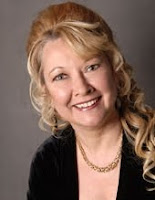I can count on one hand the number of times I've written a book where it wasn't part of a series. Most times I'll already know whether a book is part of a trilogy, quartet, six book series, or, like the Dark Sword series I'm writing now, going to be much, much longer. The one question I get asked most is: How do you keep up with all the characters?
Well, I'm here to tell you. J
I'll begin by saying that everyone has to find their own distinct writing style. What works for one may not work for you. Same with how you keep track of characters and important events in a series.
For me, I keep two spiral notebooks with me while I'm writing. One is where I keep track of my daily and weekly writing goals. I have a set number of pages I write daily, and so I know how long it will take me to complete the book. This spiral also has a running tally of chapters, because I cannot begin to tell you how many times I've had two chapter fives. Lol
The second notebook is dedicated strictly to the Dark Sword series. Since my series is a medieval Scottish paranormal there is a lot of data I need to keep track of. I list every Warrior, when he was born, when his god was unbound, what god he has inside him, what color he changes when his god is unleashed, what powers he has, what the colors/look of his tartan is, and I even make note of how/why they were taken by the villain.
But that's just the tip of the iceberg. I also keep one page devoted to each book where I list the hero and heroine at the top of the page, their hair color, eye color, and any scars and other important information. I also once again list the Warrior's god and his color. Since I like to assign a special scent to my characters, I also make sure to list that so as not to duplicate later.
Below the hero and heroine I record where the book will take place. Sometimes they never leave MacLeod Castle. Other times, they are all over the place, and it's important I keep track of it so I don't have to go looking through the book later.
Next comes the rest of the characters. I inventory each character, how they are connected to the hero or heroine, any hair color/eye color I've given them, and why they are a part of the book. Oftentimes I'll bring back a character I've found interesting in a previous book, and having that kind of information saves me so much time.
Still, there's more. After I write my first draft when I go back through to do my revisions, I'll begin making notes of certain passages. For instance, in one book I have a character use her Druid magic to talk to the trees. It's the first time I've shown how she does it and what it is like. I make note of the passage so I know where to find it since it's too long to write down.
It was perfect when I went to write her story and I wanted to expand on how she spoke to the trees, but I had edited one book and wrote another in between that time. So, I had forgotten. Yet, I had the page number, and I just opened the book, found what I needed and was able to get on with the new story.
I'd like to say that I always write down what I need to know for future books, but the reality is not always. I've learned over the years to kind of pick up on what I think I might need. Sometimes I list things I never use. Other times I have to go back and skim until I do find what I need.
The lesson I learned is that the more I keep track of, the less time I spend trying to find what I had wrote before and can concentrate on the new book.
I'd also like to mention that as well as the notebooks, I keep an excel database with all the Warrior information because it's a bit easier to go in an delete a sentence and keep it all nice and pretty on the computer. J
If you're looking to write a series, or you are in the middle of one, try some different things and see what works for you in keeping all the information.
Peace and love!
To find out more about me please visit my website at www.donnagrant.com. To read more about the Dark Sword series, see pics of the Warriors, take the quiz, download wallpaper, or search characters, please visit www.donnagrant.com/darksword
Hugs,
DDonna Grant is the best selling, award winning author of more than twenty novels spanning multiple genres of romance – Scottish Medieval, historical, dark fantasy, time travel, paranormal, and erotic.
Donna lives in Texas with her husband, two young children, three cats, and one long-haired Chihuahua.
Wicked Highlander
A HEART IN CHAINS...
The most reckless and fierce of the MacLeod brothers, Quinn is a prisoner of the god inside him, tormented by his inability to save his family from slaughter. His fury governs him, and day by day he loses himself to the darkness in his soul. But Quinn has a profound yearning for a woman’s love...
A PASSION UNBOUND...
Raised by Druids, the achingly beautiful Marcail is as spellbinding as the ancient magic that surges through her body. To Quinn, she is the most desirable woman he has ever known. But to his enemy Deirdre, she is the perfect bait to lure Quinn into her trap. Once the two lovers are in her wicked grasp, their passion will be put to the ultimate test...











